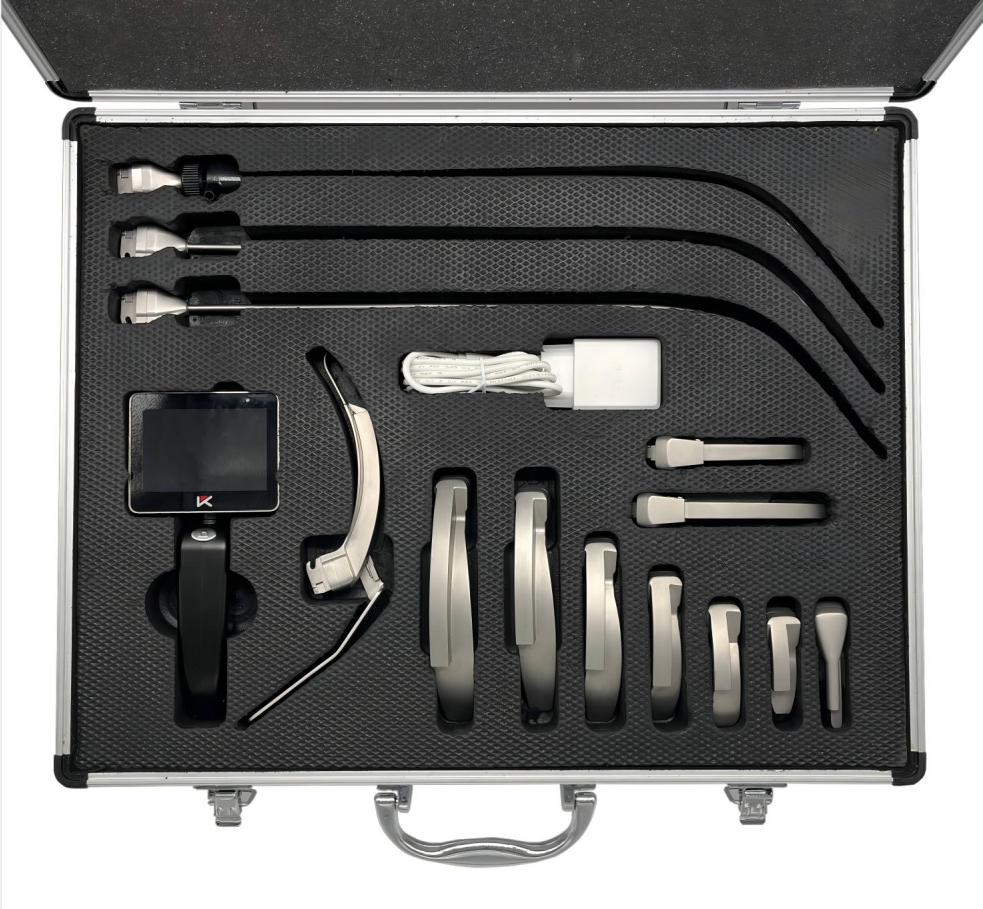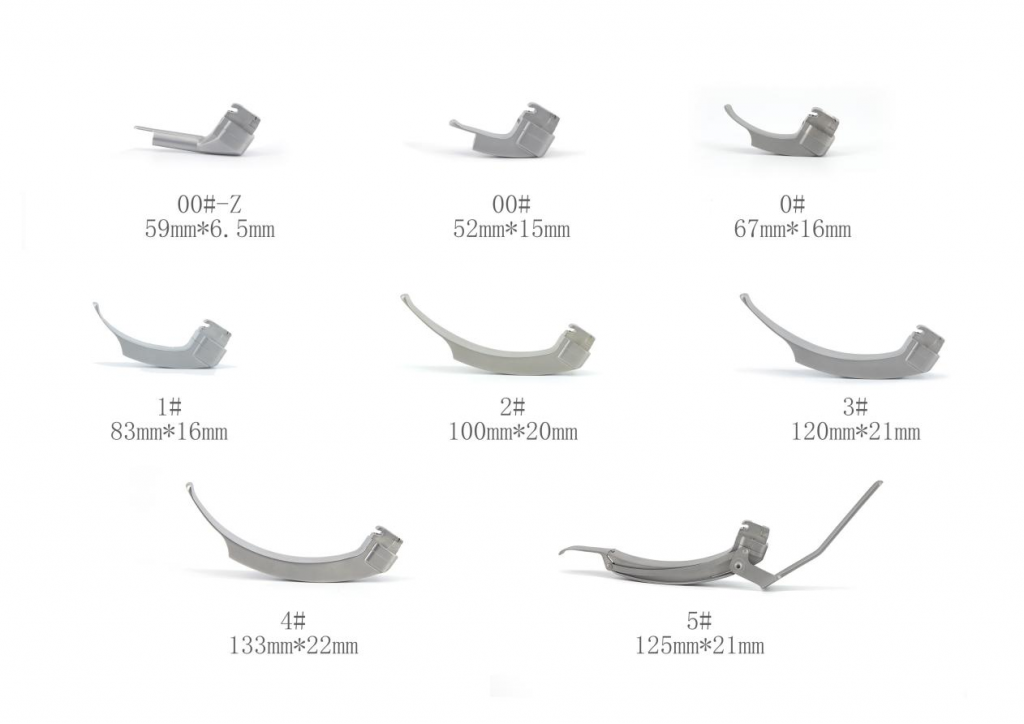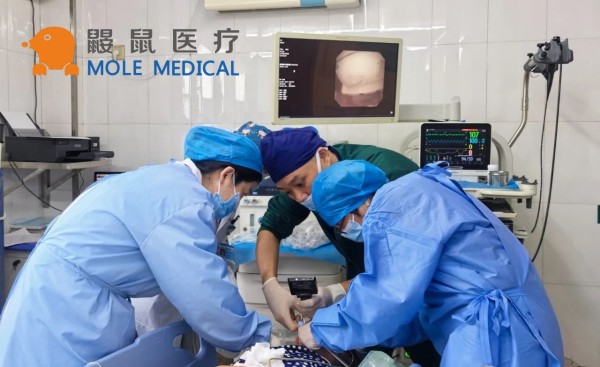Exploring Laryngoscope Blade Parts & Functions
Dec 23, 2023
Laryngoscope blade parts are essential tools for medical professionals in diagnosing and treating various respiratory conditions. These blades consist of several parts that work together to provide a clear view of the patient’s airway. In this article, we will delve into the various laryngoscope blade parts and their crucial functions in medical procedures.
Laryngoscope blade parts are precision-engineered to provide reliable and accurate diagnostic results. The handle, blade, and associated accessories work in unison to enable medical professionals to maneuver the blade with precision and control. Understanding the different parts of laryngoscope blades is crucial for selecting the right tool for the procedure and ensuring optimal patient care.
In the following sections, we will explore the different types of laryngoscope blades, the key components that make up these blades, their varying sizes, and the advantages and considerations of using both disposable and reusable blades. We will also discuss best practices for laryngoscope blade usage, safety precautions associated with blade handling, and the latest advancements in blade technology. By the end of this article, you will have a comprehensive understanding of laryngoscope blade parts and their crucial role in medical diagnostics and procedures.
Understanding Laryngoscope Blades
The laryngoscope blade is a key component in providing a clear view of the airway during intubation and other medical procedures. There are various types of laryngoscope blades available, each with a specific design and function to suit diverse patient anatomies and diagnostic requirements.
The most common types of laryngoscope blades are the Macintosh and Miller blades. The Macintosh blade features a curved design that is ideal for adult anatomy, while the Miller blade has a straight design that is suitable for neonatal and pediatric intubation.
Other laryngoscope blade designs include the Wis-Hipple, Seward, and Oxiport blades, which are used for specialized medical procedures. The Wis-Hipple blade has a unique design that provides maximum exposure of the vocal cords, while the Seward blade offers improved access to the hypopharynx. The Oxiport blade is designed to facilitate oxygenation and ventilation during intubation.
When selecting a laryngoscope blade, it is essential to consider the patient’s age, anatomical features, and medical condition. Factors such as blade size, shape, and material can significantly impact diagnostic outcomes and patient safety. Therefore, healthcare professionals must have a comprehensive understanding of the available laryngoscope blades and their functions to make informed decisions.
Key Components of Laryngoscope Blades
Laryngoscope blades are made up of several important components that work together to provide healthcare professionals with the necessary tools for accurate diagnostics and safe procedures. These components include handles, blades, and associated accessories.
Handles
The handle is a critical component of laryngoscope blades as it provides control and maneuverability during procedures. Handles are typically made of stainless steel or plastic and are available in various sizes and designs to suit individual requirements. Some handles feature a battery-powered light source, which illuminates the patient’s airway for improved visibility.
Blades
The blade is the working end of the laryngoscope and is inserted into the patient’s mouth to visualize the airway. Blades are available in different sizes and shapes, depending on the patient’s age and anatomy. The most common types of blades include Miller blades, Macintosh blades, and Wisconsin blades. These blades are typically made of stainless steel and can be reusable or disposable.
Associated Accessories
In addition to handles and blades, laryngoscope blades come with a range of associated accessories. These accessories include blade removers, cleaning brushes, and storage cases. Blade removers are used to detach blades from handles, while cleaning brushes are used to remove debris and maintain cleanliness. Storage cases keep blades and handles organized and protected from damage and contamination.
Understanding the key components of laryngoscope blades is essential for healthcare professionals to make informed decisions regarding blade selection, usage, and maintenance. By ensuring that all components are properly maintained and replaced when necessary, practitioners can optimize patient care and achieve better outcomes.
Exploring Laryngoscope Handle Designs

Laryngoscope handles are the components that connect the blade to the power source and allow for control and maneuverability during procedures. These handles are usually made of stainless steel or plastic and come in various styles and designs to suit the needs of different medical settings and patient populations.
One common type of laryngoscope handle is the traditional straight design, which allows for a direct line of sight and easy insertion into the patient’s mouth. Another popular option is the curved handle, which provides improved ergonomics and reduces wrist strain during prolonged procedures. Some laryngoscope handles feature removable blades for easy replacement and cleaning, while others have built-in LED lights for enhanced visualization.
When selecting a laryngoscope handle, it’s essential to consider factors such as comfort, durability, and compatibility with specific blades and accessories. Ergonomic designs that reduce hand fatigue and provide a secure grip can help improve procedural outcomes and reduce the risk of errors. Furthermore, regular maintenance and cleaning of laryngoscope handles can help extend their lifespan and prevent cross-contamination in medical settings.
Understanding Laryngoscope Blade Sizes
Laryngoscope blades are available in different sizes to suit various anatomies and age groups of patients. These sizes are designated by numbers, with the larger numbers indicating larger blades. Adult laryngoscope blades typically range from 2 to 4, with size 3 being the most common. Pediatric blades range from 0 to 1, with size 1 being the most commonly used.
When selecting a laryngoscope blade size, several factors must be considered, including the patient’s age, airway anatomy, and the intended use of the blade. For adult patients, a size 3 blade is appropriate in most cases, while pediatric patients would require smaller blades like size 0 or 1.
In addition to age and anatomy, other factors like the patient’s weight and neck circumference may also affect blade size selection. It’s essential to consult with a healthcare professional when selecting a laryngoscope blade size to ensure accuracy and successful intubation.
Replacement and Maintenance of Laryngoscope Blades
Regular maintenance, cleaning, and replacement of laryngoscope blades are essential to ensure superior performance and maintain optimal hygiene standards. After each procedure, it is crucial to clean and sterilize the blades according to the manufacturer’s guidelines to prevent the buildup of debris or microorganisms that could pose a risk to future patients.
Blade replacement should be carried out when necessary or according to the manufacturer’s recommended timeline, which may vary depending on factors such as blade type, usage frequency, and environmental conditions. Overused or damaged blades can impair visibility during procedures and increase the risk of injury to the patient.
It is important to periodically inspect the blades for wear and tear, including cracks or discoloration, and replace them if necessary. Healthcare professionals must also ensure that the blades are appropriately stored in a clean and dry environment to prevent damage or contamination.
By following proper maintenance and replacement procedures, healthcare professionals can ensure that laryngoscope blades perform optimally and maintain excellent hygiene standards, ultimately contributing to successful patient outcomes.
Advantages of Disposable Laryngoscope Blades
Disposable laryngoscope blades have become increasingly popular in medical settings due to their numerous benefits. One key advantage is the reduced risk of cross-contamination. Since these blades are designed for single-use, there is no need for sterilization, reducing the possibility of transmitting infectious diseases between patients.
Another benefit is the convenience factor. Disposable blades eliminate the need for cleaning, maintenance, and storage, saving time and resources for healthcare professionals. Additionally, they are often available in a variety of sizes and styles, making them adaptable to different patient needs and anatomies.
While disposable laryngoscope blades may have a higher initial cost compared to reusable blades, their advantages in terms of safety and convenience can be invaluable for healthcare facilities. By using disposable blades, healthcare professionals can ensure a safer, more efficient, and cost-effective approach to laryngoscope use.
Benefits and Considerations of Reusable Laryngoscope Blades

In addition to disposable options, reusable laryngoscope blades offer various benefits and challenges that healthcare professionals should consider before making a decision. These blades are cost-effective in the long run as they do not require frequent replacements like disposable blades. Additionally, reusable blades can be sterilized using various methods such as autoclaving and chemical disinfection, ensuring compliance with hygiene standards.
However, there are challenges to using reusable laryngoscope blades. The sterilization process can be time-consuming, and if not done correctly, it may lead to contamination or damage of the blade. In addition, sharpening and maintenance of reusable blades require specialized knowledge and skills, which may increase labor costs.
Healthcare professionals should weigh the benefits and challenges of using reusable laryngoscope blades to determine the best option for their needs. Regular testing and maintenance of the blades are essential to ensure they are safe to use on patients.
Developing Trends in Laryngoscope Blade Technology
Recent advancements in laryngoscope blade technology have led to significant improvements in medical procedures involving airway management and diagnostics. New blade designs have incorporated enhanced visualization features, including LED lighting and video recording capabilities, to provide clearer and more detailed images of the airway during intubation.
Additionally, innovations in blade materials have resulted in sturdier, more durable blades that are better able to withstand wear and tear from repeated use and exposure to cleaning solutions. These advancements have allowed for greater precision and control during procedures, leading to improved patient outcomes.
Furthermore, the development of disposable laryngoscope blades has addressed concerns around cross-contamination and infection control, providing a convenient and cost-effective solution for medical settings.
Overall, the continued evolution of laryngoscope blade technology shows promise for further improving the safety, accuracy, and efficiency of airway management and diagnostic procedures.
Best Practices for Laryngoscope Blade Usage
When using laryngoscope blades, it’s essential to follow best practices to ensure accurate diagnostics and safe procedures. Here are some tips and guidelines:
Proper Handling
Always handle laryngoscope blades with care, avoiding any rough handling or excessive force that could damage the blade. When using reusable blades, ensure they are properly cleaned and sterilized before each use.
Correct Insertion
Take care when inserting the laryngoscope blade into the patient’s mouth to avoid any discomfort or injury. Insert the blade slowly and gently, taking care not to cause any trauma to the patient.
Optimal Viewing Angle
Ensure you have the optimal viewing angle to visualize the patient’s vocal cords clearly. Adjust the blade angle as needed to get the best view, taking care not to put unnecessary pressure on the patient’s mouth or throat.
Patient Comfort
Always prioritize patient comfort and safety when using laryngoscope blades. Communicate effectively with the patient to ensure they understand the procedure and are comfortable throughout.
Regular Maintenance
Perform regular maintenance and cleaning of laryngoscope blades to ensure optimal performance and hygiene standards. Follow the manufacturer’s guidelines for cleaning and sterilization.
By adhering to these best practices, healthcare professionals can use laryngoscope blades effectively and safely, ensuring accurate diagnostics and patient comfort.
Safety Considerations and Precautions
When handling laryngoscope blades, it is important to take safety considerations and precautions seriously to ensure patient well-being. First and foremost, individuals should receive appropriate training and education on the proper use and handling of laryngoscope blades to prevent accidents or injury.
During use, it is crucial to verify the integrity and functionality of the blade, handle, and associated accessories and ensure they are in proper working order. Damaged or faulty equipment should be immediately removed from use and either replaced or repaired as necessary to prevent potential risks.
Additionally, healthcare providers should adhere to strict hygiene and infection control protocols to minimize the risk of cross-contamination and infection. This includes proper cleaning, sterilization, and disposal of laryngoscope blades according to established guidelines and standards.
Furthermore, healthcare providers should consider the patient’s comfort and safety during procedures and take any necessary precautions to avoid obstructions or injuries to the airway or surrounding tissues. Lastly, disposing of used blades in designated sharps containers can prevent accidental needlesticks and puncture wounds.
Conclusion
In conclusion, laryngoscope blades are essential tools in medical diagnostics and procedures, with various parts and components that play critical roles. Healthcare professionals must understand the different blade types, sizes, and handle designs to select the most appropriate blade for each patient and procedure. Routine maintenance and cleaning of reusable blades and the use of disposable blades can help to reduce the risk of cross-contamination and improve hygiene standards. Advancements in blade technology continue to enhance visualization and improve patient outcomes. By following best practices and safety precautions, healthcare professionals can ensure optimal patient care using laryngoscope blades.
FAQ
What are laryngoscope blade parts and their functions?
Laryngoscope blade parts consist of the handle, blade, and associated accessories. The handle provides grip and control, while the blade helps visualize the vocal cords and airway. Accessories such as light sources and fiber optic bundles enhance visibility.
What are the different types of laryngoscope blades?
The types of laryngoscope blades include Macintosh, Miller, Wisconsin, and D-BLADE. Each blade has a distinct shape and curvature, catering to varying anatomical needs and specific medical procedures.
What are the key components of laryngoscope blades?
Laryngoscope blades consist of a handle, a detachable blade, light sources for illumination, fiber optic bundles for improved visibility, and optional accessories such as video recording capabilities or anti-fog systems.
How do laryngoscope handles contribute to medical procedures?
Laryngoscope handles play a crucial role in providing control and maneuverability during procedures. They are designed with ergonomic features, such as non-slip grips or lightweight materials, to ensure comfort and precision in examinations.
What are the different sizes of laryngoscope blades?
Laryngoscope blades come in various sizes, ranging from 0 to 4, with larger numbers indicating larger blade sizes. Size 0 is suitable for small pediatric patients, while size 4 is typically used for larger adult patients.
How often should laryngoscope blades be replaced and cleaned?
Laryngoscope blades should be regularly inspected, cleaned, and maintained according to manufacturers’ guidelines. The frequency of blade replacement depends on usage, wear and tear, and adherence to sterilization procedures.
What are the advantages of disposable laryngoscope blades?
Disposable laryngoscope blades offer several benefits, including reduced risk of cross-contamination, convenience in handling and disposal, and assurance of consistent quality with each use.
What are the benefits and considerations of using reusable laryngoscope blades?
Reusable laryngoscope blades can be cost-effective over time, especially in high-volume medical settings. However, their sterilization procedures must be carefully followed to ensure infection control and proper functionality.
What are the latest trends in laryngoscope blade technology?
Advancements in laryngoscope blade technology include the use of improved blade materials for enhanced durability and visualization features, such as built-in cameras or enhanced lighting systems.
What are best practices for using laryngoscope blades?
Best practices for using laryngoscope blades include proper patient positioning, thorough blade inspection before use, efficient cleaning and sterilization protocols, and effective communication between healthcare providers during procedures.
What safety considerations should be kept in mind when using laryngoscope blades?
When using laryngoscope blade parts, healthcare professionals should adhere to infection control protocols, sanitize equipment properly, use blades appropriate for the patient’s anatomy, and be cautious to avoid injury to the patient’s airway or dental structures.
Conclusion
In conclusion, laryngoscope blade parts are vital components in medical diagnostics and procedures. Understanding the different types of blades, their parts, and proper usage can help healthcare professionals make informed decisions and ensure optimal patient care.
Categories
Latest Articles

Disposable Nephroscopes: Redefining Safety & Efficiency in Urology
Introduction The shift towards minimally invasive urological surgery has found a pivotal ally: the disposable nephroscope. As traditional reusable scopes grapple with persistent biofilm contamination risks and soaring sterilization costs, the global medical community is rapidly adopting single-use solutions. This article analyzes the clinical value, technological evolution, and dynamic innovation landscape driving this transformative shift. ... Read more

Disposable Video Laryngoscope Blades: The Ultimate Solution for Preventing Cross-Contamination
In the operating room, as the cold light of a video laryngoscope illuminates a patient’s airway, an age-old medical challenge is being redefined: How can life-saving instruments avoid becoming vectors of infection? Jiangsu MoleMedical drives an innovative safety revolution—replacing reusable devices with single-use, sterile laryngoscope blades that create a pure barrier for critical airways. Traditional video ... Read more
-2.jpg)
FDA & CE Approved Video Laryngoscope: What Makes It Stand Out?
Introduction In high-pressure emergencies and precision-driven operating rooms, video laryngoscopy is revolutionizing airway management. Mole Medical’s FDA and CE-certified technology replaces tactile-dependent “blind intubation” with real-time visual navigation – enhancing safety, accuracy, and clinical outcomes worldwide. Why Certification Matters Mole Medical’s dual certifications validate its global compliance and performance: FDA Clearance: Rigorous validation of safety/efficacy ... Read more

Mole Medical Showcases Advanced Endoscopy Solutions at CMEF Autumn 2025, Driving Global Partnerships
Guangzhou, China – September 26-29, 2025 – The 92nd China International Medical Equipment Fair (CMEF Autumn) concluded successfully on September 29th at the Canton Fair Complex in Guangzhou. Mole Medical Technology Co., Ltd. (Mole Medical) made a significant impact at the event, drawing global medical professionals and partners to its booth (Hall 2.1, Stand Q24) ... Read more

How to Use Disposable Ureteroscopes Safely and Efficiently
In the field of urology, the application of disposable electronic ureteral-kidney pelvis endoscopy catheters is leading the technological innovation in minimally invasive surgeries. According to the 2024 multi-center research data from China’s urology department, among the over 5,000 surgeries included, the patient group using disposable catheters performed significantly better in key indicators such as operation ... Read more



